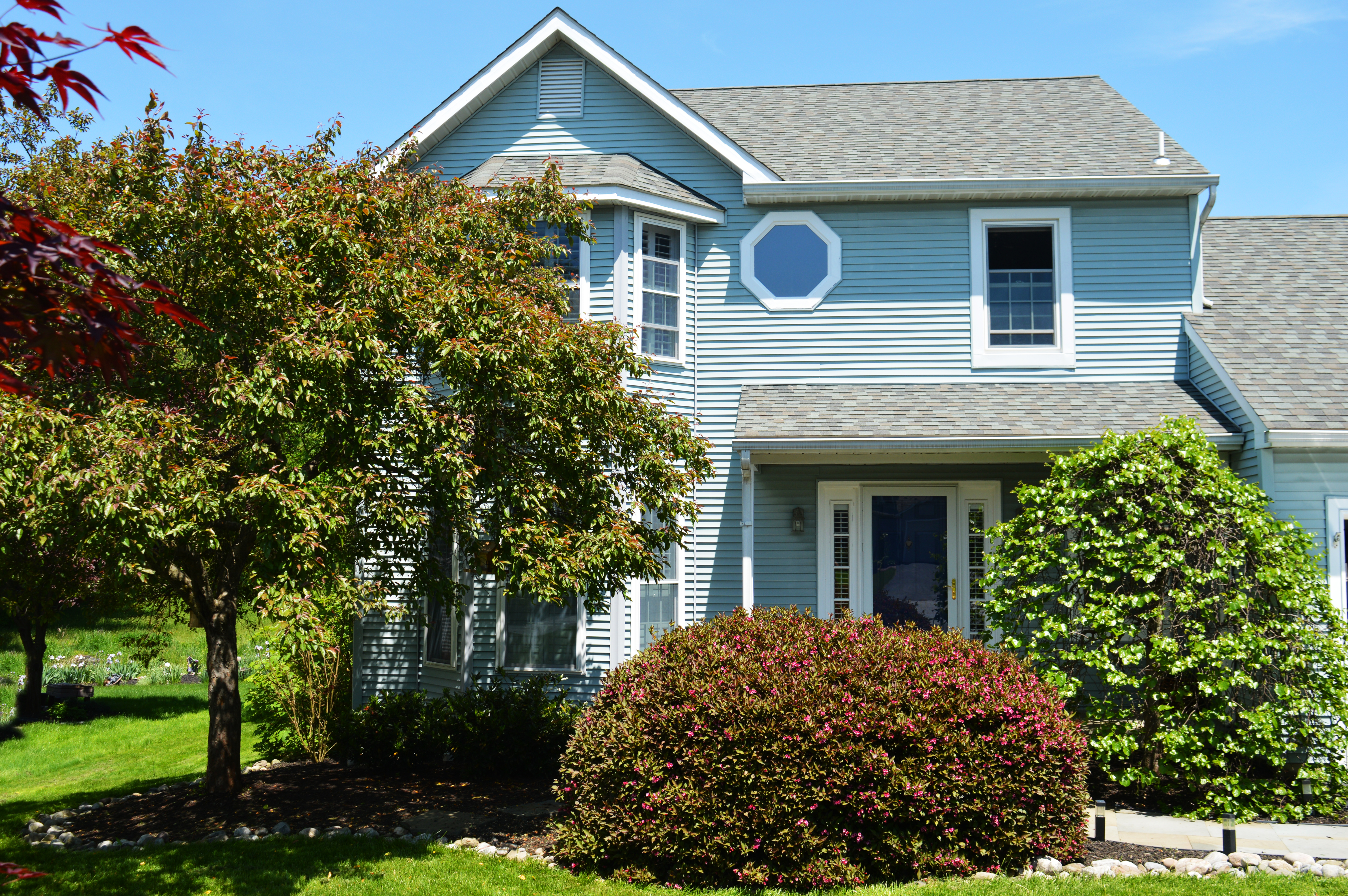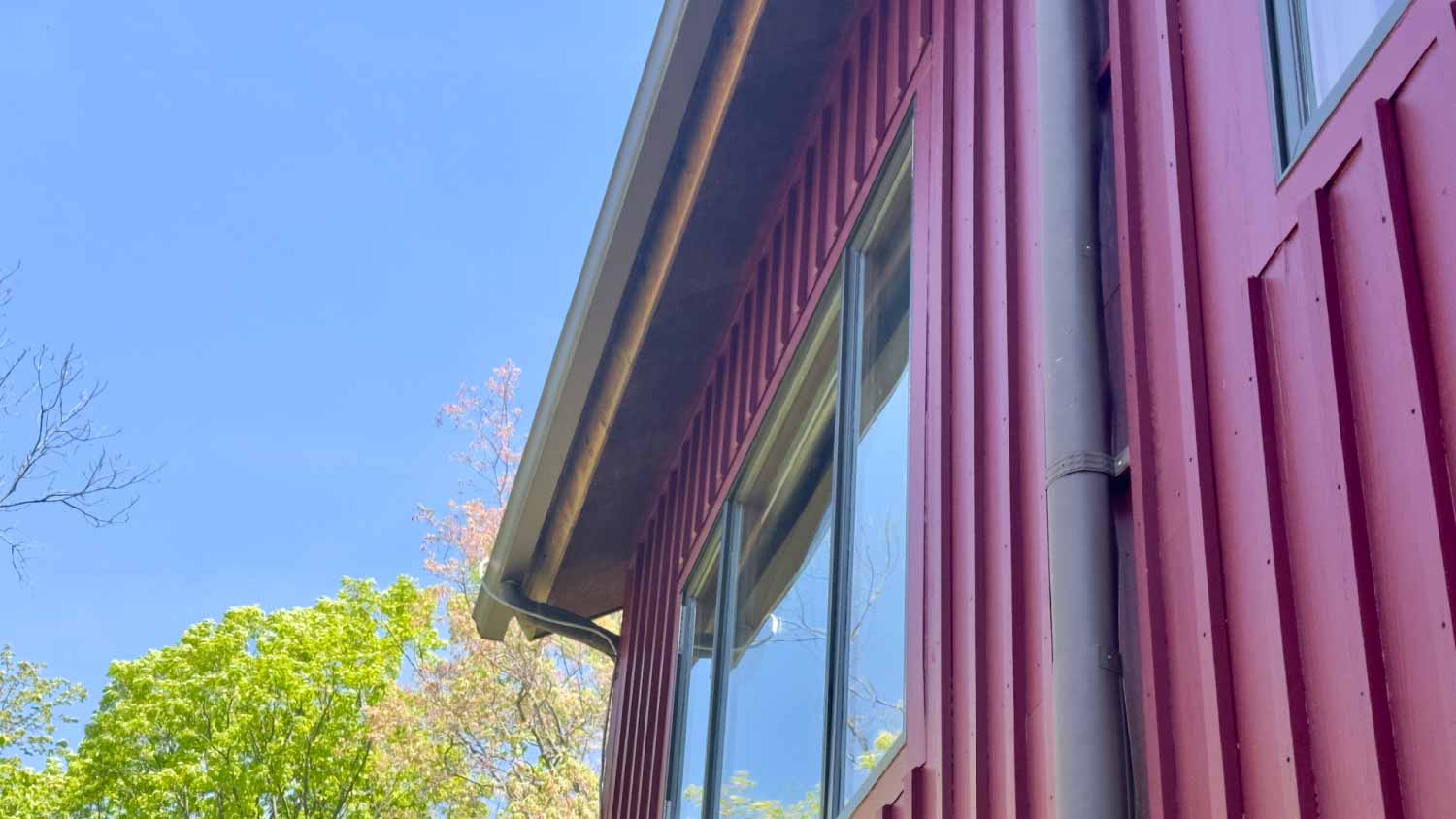
Discover the cost to install exterior trim. Learn about price factors, labor, materials, and ways to save on your exterior trim installation project.
Choose which direction to take your home’s siding


Board and batten siding has a vertical design that can add visual height to your home’s exterior.
Lap siding uses overlapping horizontal panels or boards, visually widening narrow homes.
Combining lap siding and board and batten can accentuate your home’s architectural features.
When you’re installing new siding, deciding between various siding styles can be complicated. Board and batten and lap siding are two of the most popular siding choices, each with its own benefits and drawbacks. Learn the difference between board and batten and lap siding so you can decide which is right for your home.
Board and batten siding consists of vertical boards alternating with narrow strips (battens), while lap siding uses overlapping horizontal planks or boards of uniform size. Both types of siding can be made from various materials, including wood, engineered wood, fiber cement, and vinyl.

Board and batten siding has been used in the U.S. for more than 200 years and is a popular choice for houses with a rustic or farmhouse aesthetic to this day. Board and batten’s design provides a textured look, with the battens set further out from the exterior surface than the boards. The vertical design draws the eye up, adding visual height to a home’s exterior.
| Pros | Cons |
|---|---|
| Rustic aesthetic | More complex installation |
| Adds visual height | Higher initial cost |
| Enhances architectural features | May be prone to warping |
Best for: Rustic or farmhouse-style houses, enhancing vertical architectural features
Board and batten’s unique vertical design adds visual interest and curb appeal to any home. The textured detailing creates a timeless, polished look that adds visual height to shorter homes and can enhance vertical features like gables, peaks, and towers.
Because board and batten is more complex to install due to its alternating boards and battens, the initial cost is higher than other types of siding. The type of material used can affect the siding’s durability and longevity as well—permeable wood and budget-friendly options like vinyl are more prone to warping, which can shorten the siding’s lifespan.

Lap siding consists of boards, planks, or panels installed horizontally that overlap one another, giving the siding its name. It’s the most popular type of siding in the U.S., and different types of lap siding include Dutch lap, clapboard, and shiplap.
| Pros | Cons |
|---|---|
| Easy to install | May require regular maintenance |
| Comes in various styles and materials | Less unique aesthetics |
| Budget-friendly |
Best for: Budget-conscious homeowners
Lap siding is easier and less time-consuming to install than board and batten, and costs less when comparing the two styles in the same material. Lap siding is also available in a broad array of styles and materials, allowing homeowners to customize their siding to match their home’s aesthetics.
The popularity of lap siding means it offers less unique aesthetics, and it may be viewed as the “standard” option instead of board and batten, which has a more upscale feel. Depending on the material, lap siding may also require more frequent maintenance to keep it in good condition.
While the primary difference between these two siding styles is aesthetic, seeing how they match up in various categories can help you decide which is right for you.
Your aesthetic preference will determine which style you prefer, but board and batten’s textured design may be considered the more visually appealing and unique option. If you can’t decide, these two siding types can be mixed on the same home for a truly customized exterior.
The wide array of options for material, colors, and designs gives lap siding an edge when choosing what kind of siding to select. Board and batten is available in varying widths, but lap siding has multiple options for styles, ranging from basic traditional lap siding to more elaborate styles like Dutch lap or beaded seam lap.
When determining the cost to replace siding, lap siding is the more affordable option due to its less complex installation. The material you choose will be the main determining factor in siding costs, but labor costs will be higher for board and batten.
Lap siding is easier and faster to install than board and batten. Both should be professionally installed to ensure they provide proper protection for your home and prevent damage to your home’s exterior. Hire a siding contractor with experience installing the type of siding you’ve selected.
Siding’s durability depends on the material it’s made of. Wood siding is prone to warping and water damage without regular maintenance, and vinyl siding may crack, chip, or warp more easily than more durable options like engineered wood or fiber cement. A local fiber cement siding pro can install durable, low-maintenance siding that keeps your home looking great for years to come.
From average costs to expert advice, get all the answers you need to get your job done.

Discover the cost to install exterior trim. Learn about price factors, labor, materials, and ways to save on your exterior trim installation project.

The cost of Hardie board siding depends on the size of your home and the style and color you choose. Get a more accurate estimate with our in-depth cost guide.

Wood siding repair costs depend on the size, material, repair type, and more. Keep reading to learn more about siding repair budgeting.

Need new siding but want a unique appearance and boosted home value? Use this guide on mixing siding types to nail that aesthetic and curb appeal.

Picking between Hardie board and traditional cement board siding? Our comparison guide will help you decide.

Frieze board can transform a home by adding depth and style. Keep reading to learn what frieze board is and how to use it to enhance your home’s appearance.